- For decades, Argentina has subsidized the clearing of native forest and planting exotic species, primarily pines, on land often claimed by Indigenous peoples.
- A recent standoff over a land dispute led to gunmen shooting two young Indigenous Mapuche activists, one fatally.
- Pine plantations increase wildfire risk, contributing to several major fires in recent years.
- Wildfires also encourage invasion by pines into native forests, leading to a feedback loop that threatens both native forests and human settlements.
CUESTA DEL TERNERO, ARGENTINA – On a brisk spring day in September 2021, an Indigenous Mapuche community known as Lof Quemquemtrew announced it had reclaimed a piece of ancestral territory in the remote Cuesta del Ternero valley of the Patagonian Andes of Argentina. The encampment is in an area of native forest adjacent to pine plantations owned by Rolando Rocco, a local businessman with a forestry license for the land in question.
The Cuesta del Ternero valley is a case study of the relationship between plantation forestry and land rights in Patagonia. The state’s push to plant exotic commercial species is now colliding with a growing Indigenous land-back movement and increased wildfire risk. As Argentina has committed to nearly double the area of its forestry plantations to meet climate goals set out in the Paris Agreement, addressing questions about their role in land disputes and wildfires is increasingly important to Indigenous activists and people whose homes face fire risk.
Within a week of Lof Quemquemtrew’s announcement, squatting charges were filed, and police swept into the site, arresting six adults and an 8-year-old. They confiscated tents and other possessions, and blockaded the access road to people delivering food or warm clothing to those who remained in the territory. A solidarity camp sprang up on the road to face down the 24-hour blockade. Indigenous organizations and human rights groups filed legal requests to pass through on humanitarian grounds but they were repeatedly denied.
According to the district attorney, “statements about humanitarian aid are a euphemism,” though she didn’t explain what for.
However, two months into the standoff, on November 21, police let two men employed by Rocco through the checkpoint with permission from the security ministry. They proceeded to shoot two Mapuche, killing 29-year-old Elías Garay Cayicol on the spot and critically wounding 26-year-old Gonzalo Cabrera, who survived after major abdominal surgery. The shooters are currently in prison awaiting trial.
After the shooting, the Río Negro provincial government was quick to distance itself from the affair.
“It’s private property and the issue is being resolved in the courts,” said provincial minister of government and community Rodrigo Buteler.
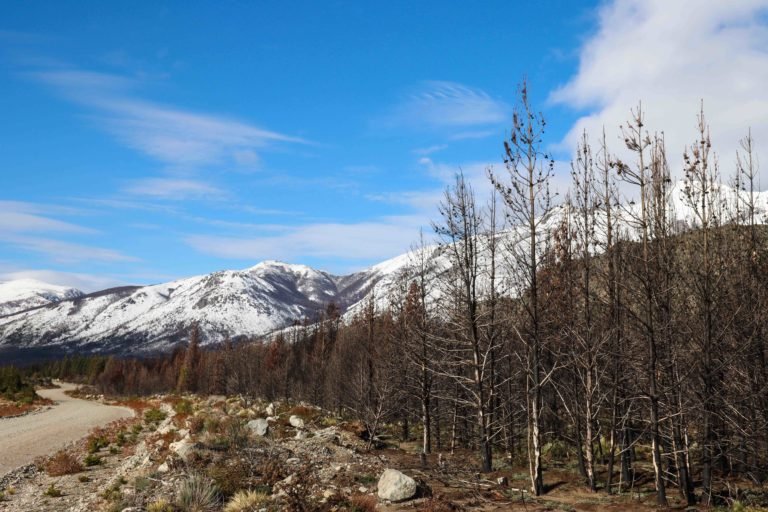
However, the land in question is not private; it’s public. Rocco acquired a forestry license on 3,550 hectares (8,772 acres) of public land in 1985, at the height of a pine-plantation boom.
“In those days, they would pay you to clear out what was there, all the native forest, let you sell whatever you took out, and then pay you to plant fast-growing exotics, without paying any attention whatsoever to the consequences,” said Nicolás D’Agostini, a forestry technician with the Río Negro Fire-fighting and Prevention Service (SPLIF).
Mongabay attempted to contact both the Río Negro Land Bureau and Rolando Rocco for this story but received no timely response.
Land disputes and land “improvements”
Throughout the late 20th century, the government promoted replacing native forests with commercial plantations of species native to western North America: ponderosa pine (Pinus ponderosa), Monterey pine (P. radiata), lodgepole pine (P. contorta), and Douglas fir (Pseudotsuga menziesii). Tens of thousands of hectares were planted along the mountainous western edges of Río Negro, Neuquén and Chubut provinces.
The National Investments in Cultivated Forests Law exempts all plantations from real estate, income or other taxes, and also subsidizes up to 80% of costs. Rocco was one of the first beneficiaries, receiving subsidies the first year the law went into effect to plant pines on the land.
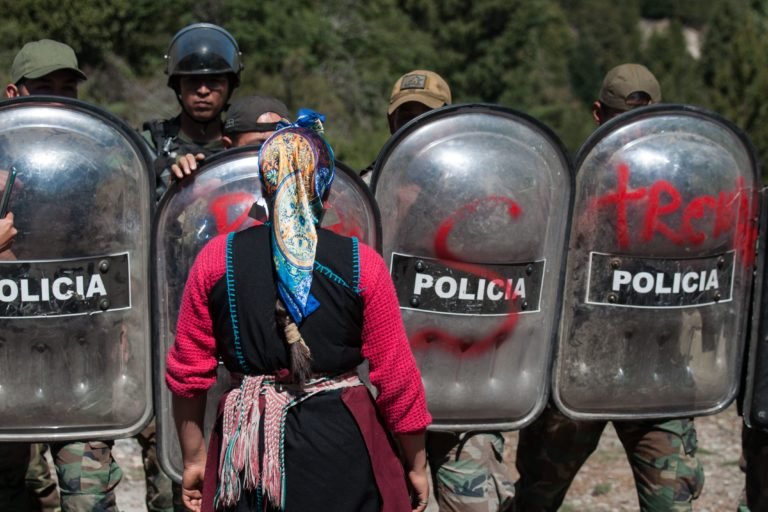
On the list of grantees alongside Rocco is the Benetton Group, the Italian clothing giant and largest private landholder in Argentina, as well as Papel Prensa, a corporation with a nationwide monopoly on newsprint production. All are absentee landlords.
According to Mirta Ñancunao, a member the Las Huaytekas community, 30 kilometers (18 miles) north of Cuesta del Ternero, smallholders rarely had deeds to land, even by the late 20th century. Both Indigenous people on ancestral territory and immigrant homesteaders were told that the only way to access full ownership was by “making improvements”— clearing native forest and planting pines.
“The province told people, ‘if you don’t plant pines, you won’t ever get a title deed,’” said Ñancunao.
Many companies acquired land by planting pines on land inhabited by others. As early as 1957, Industria Forestal Andina applied for 700 hectares (1,730 acres) of land in Cuesta del Ternero, citing that the land was “idle, because the present occupants have not made any productive improvements toward what we understand to be the fate of all land in this jurisdiction: forestry.”
Because the government gave land access to anyone planting exotics while refusing to recognize traditional inhabitants, many Mapuche see the entire policy as just a means to take their land.
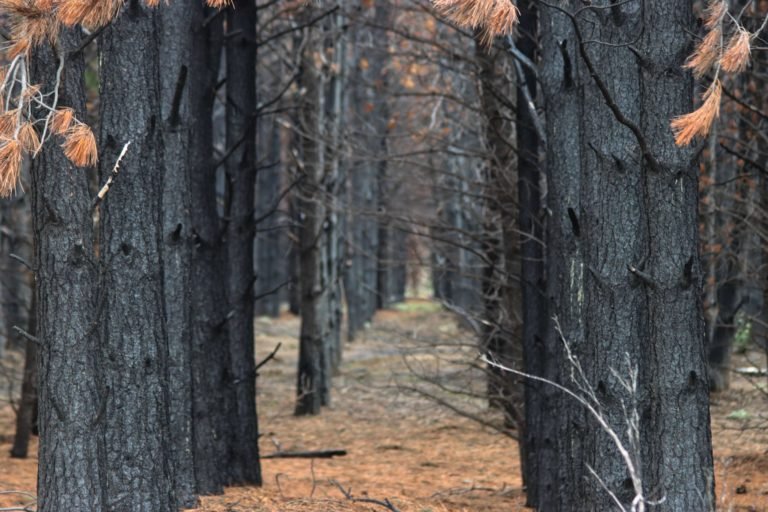
“Now they say it’s about climate change. Before, they said it was about wood,” said Mirta Ñancunao. “But the purpose was always to take the land.”
They see the recent standoff in Cuesta del Ternero as evidence that the government continues to prioritize plantations over Indigenous access to land, and do so at gunpoint.
In the words of Romina Jones, a Lof Quemquemtrew member and spokesperson, “They gave Rocco the land, they paid for these pines, and he never lived here for a day. And look how the place ended up.” While saying this, she gestured to the hills around her, all burnt black. “We just want a place to live as Mapuche.”
Patagonia forests, a site of wildfires
In recent years, wildfires have burned through the region as pine plantations have turned Patagonia’s forests into a tinderbox. Between Rio Negro and Chubut provinces, plantations account for over 9% of the area burned in the last three decades, according to data from the ministry of environment and sustainable development, but they make up just 2.5% of forest cover.
In 2021, three major fires, all involving plantations, burned near where the Andes cross the Río Negro-Chubut provincial border. The first began in January on a plantation at one end of Cuesta del Ternero and then burned through plantations and native forest alike for the next 40 days. According to firefighters and government officials, the valley’s plantations made the wildfire much worse.
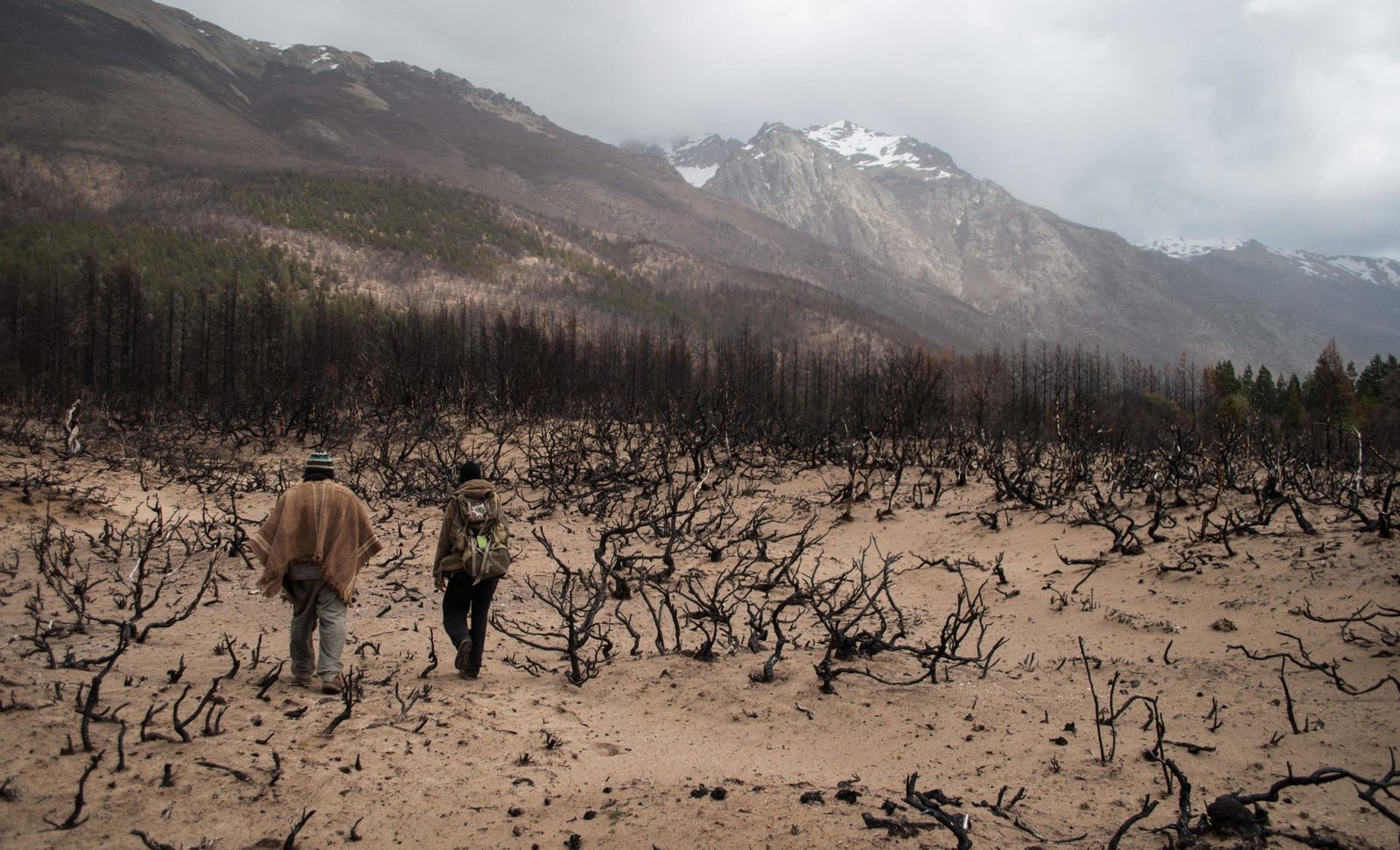
“The fire went right up the line of the plantations that were planted many years ago and then abandoned. If those had been pruned and thinned, if the excess organic material had been cleared, I have no doubt the fire would have been less severe,” said Sergio Federovisky, the national vice minister for the environment and sustainable development.
“When there’s no proper management [of a plantation], you get an explosive fuel situation—vertical continuity, horizontal continuity, everything… they’re bombs out there just waiting to go off,” said Jorge Cuevas, a forestry technician at SPLIF.
In March, another fire ignited just 16 kilometers (10 miles) to the southwest and exploded through an abandoned plantation in Las Golondrinas, destroying 500 homes in a single afternoon and leaving thousands of people homeless. Together with a third fire nearby, nearly 30,000 hectares (74,131 acres) burned in total.
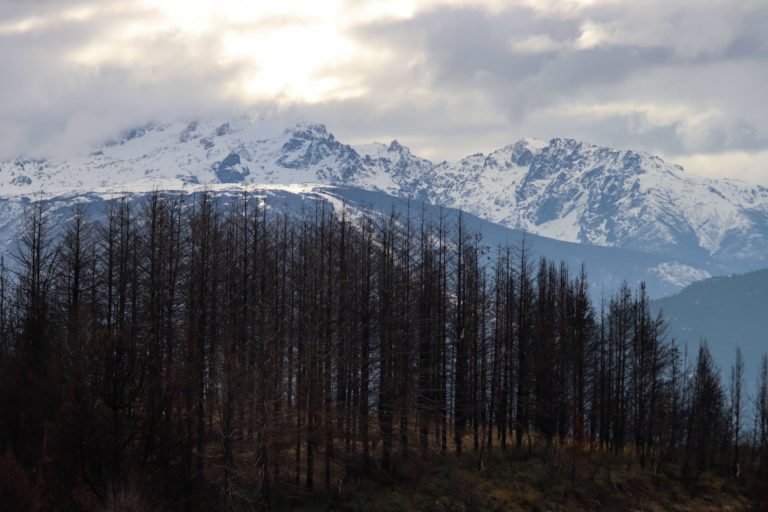
Managing the plantations is of prime importance as pine trees are already extremely flammable, said Estela Raffaele, an invasive-species biologist with CONICET, Argentina’s national research council.
“[They] take much less time to ignite, and at high densities, you find where it’s invaded, the amount of fuel is enormous,” she told Mongabay.
A study published in March in Biological Conservation found that pine species produce more flammable material and accumulate much more dead fuel as compared to Patagonian native forests, where live bushes and shrubs make up a healthy, diverse understory. Biodiversity is severely impoverished where pines have been planted or invaded, said the study, leading to the ground being covered only with dry, resinous pine needle litter.
Their results ordered the following environments from lowest fire risk to highest: native forest, pine plantation, young invasion, mature invasion. The more native forests are converted to plantations, and the more pines invade outside initial plantation sites, the higher the risk of more severe wildfires.
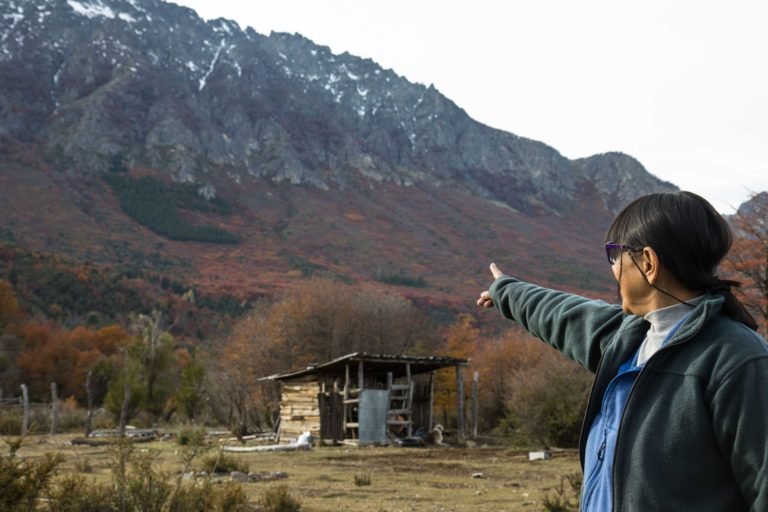
Wildfires are also accelerating the invasion of pine trees into areas where they were not originally planted. A 2017 study in Biological Invasions showed that North American pines overwhelmingly out-compete native species after fires. The most serious case is Pinus radiata, which is serotinous, meaning it has adapted to release its seeds from cones upon exposure to fire. As no native trees are serotinous, radiata has an enormous competitive advantage in colonizing burned areas.
“This leads to a positive feedback loop in the cycle of invasion and fire,” said Raffaele, a co-author of both studies. “Invasions increase fires, and fires increase invasions.”
In addition to the self-reinforcing fire risk and massive biodiversity loss caused by plantation species spreading further afield, pine invasions are affecting many other facets of the ecosystem. No comprehensive study has yet been published on plantation water usage in Argentina.
Across the Andes in Chilean Patagonia, however, where plantations are even more widespread and established, a 2019 study of large watersheds showed that as the percentage of land occupied by plantations increased, available groundwater decreased proportionally.
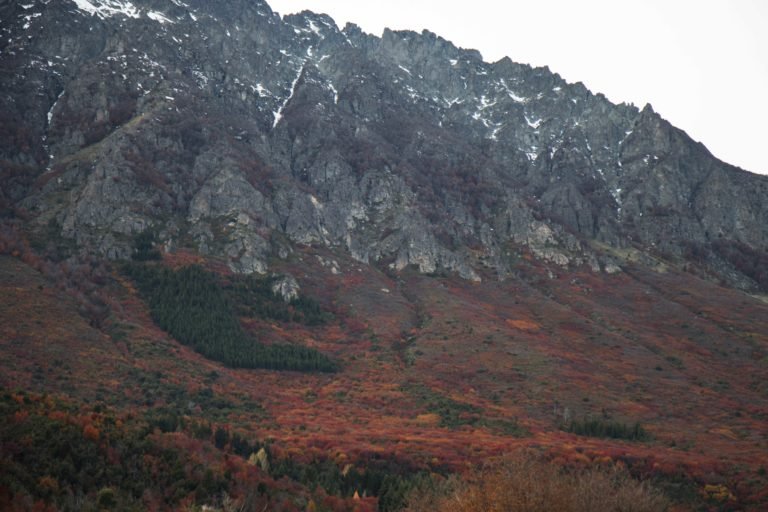
If Argentina’s goal is to nearly double its plantation acreage by 2030, these issues of fire danger, biodiversity loss due to invasion, and land rights, are going to have to be addressed, say biologists.
Estela Raffaele points out in a 2015 study that pine invasion is still in its early stages but that “there is a huge risk that in the medium-term, we may face species invasion on a large scale, with detrimental effects on the environment as well as on forestry.”
Banner image: Hiking through burned area to reach Lof Quemquemtrew. Image courtesy of Denali DeGraf.
Related listening from Mongabay’s podcast: We look at the major forest and conservation trends coming out of 2021 and 2022 with Mongabay founder and CEO Rhett Butler, and IUCN senior program officer, Swati Hingorani. Listen here:
FEEDBACK: Use this form to send a message to the author of this post. If you want to post a public comment, you can do that at the bottom of the page.













